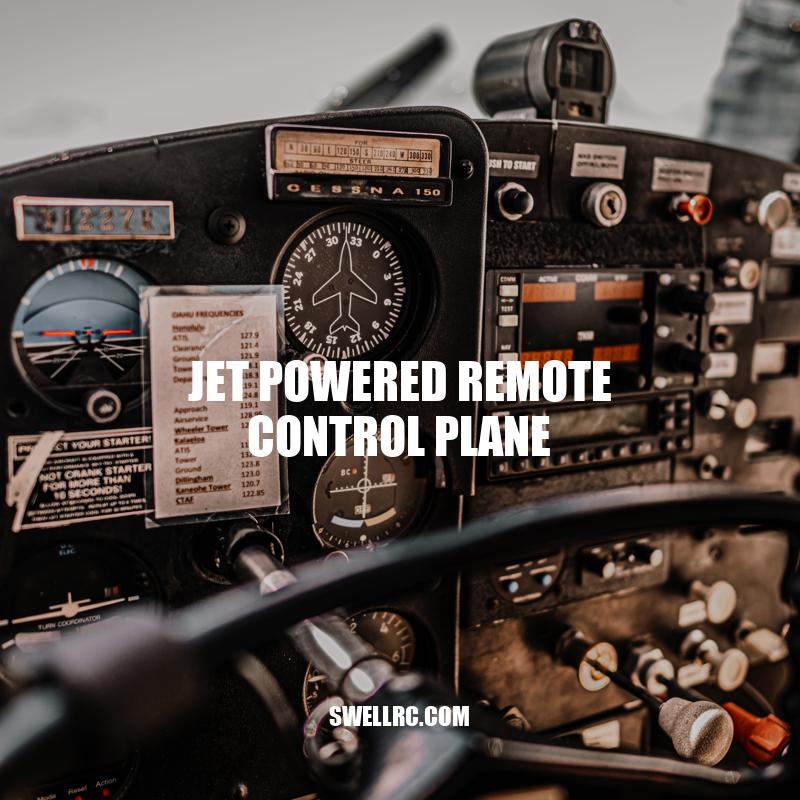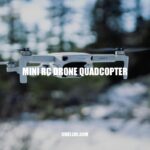Unleashing the Thrill: A Guide to Jet-Powered Remote Control Planes
Remote control planes have always been a fun and challenging hobby for aviation enthusiasts. These miniature aircraft can perform amazing maneuvers, from breathtaking loops to graceful spins and rolls. But for those looking for an even more thrilling experience, jet-powered remote control planes provide an adrenaline rush like no other. These planes are powered by miniature jet engines that propel them to incredible speeds, allowing pilots to execute daring maneuvers that would be impossible with other remote control planes. In this article, we will delve into the fascinating world of jet-powered remote control planes. We’ll explore their types, components, and how to fly them safely, as well as provide tips on how to build one yourself. Whether you’re an experienced pilot or a beginner, this article is sure to provide plenty of insights and inspiration.
Jet-powered remote control planes come in different types and models, designed to resemble real-life aircraft. However, their components are similar, and the planes are constructed from lightweight materials like balsa wood, carbon fiber, and foam. Major components of a typical jet-powered remote control plane include:
- Fuselage: The fuselage is the central structure of the plane that houses the cockpit, battery, fuel tank, and other onboard equipment.
- Wings: The plane’s wings create lift that enables it to take flight. They come in different shapes and sizes depending on the type of plane.
- Control surfaces: The plane’s control surfaces, including ailerons, rudder, elevator, and flaps, are used to steer the aircraft and execute different maneuvers.
- Landing gear: The landing gear consists of wheels or skids that allow the plane to take off and land. Some advanced models come with retractable landing gear to reduce drag.
- Jet engine: The jet engine is the heart of the plane that provides the necessary thrust to lift it off the ground.
Jet-powered remote control planes are available in various online stores, such as Amazon, Tower Hobbies, and Horizon Hobby. You can purchase Ready-to-Fly (RTF) models that are already built and require minimal assembly or opt for Do-it-yourself (DIY) kits that allow you to build the plane yourself. The next section will give you an overview of what it takes to fly a jet-powered remote control plane.
Keywords: models, lightweight materials, components, fuselage, wings, control surfaces, landing gear, jet engine, online stores.
What are the components of a remote control plane?
The components of a remote control plane include the battery, transmitter, receiver, and servos. The battery powers the plane, the transmitter sends radio signals, the receiver receives them, and the servos move the plane’s wings, tail, and ailerons. For more information about remote control planes and their components, you can check out websites such as Horizon Hobby or products such as the E-flite UMX Timber RC plane.
Flying Jet-Powered Remote Control Planes
Flying a jet-powered remote control plane is an experience like no other. However, before taking the plane out for a spin, you need to be familiar with how it works and how to operate its controls. Here are some essential things to consider when flying a jet-powered remote control plane:
- Controls: A handheld transmitter is used to control the plane and send signals to the onboard receiver. The control surfaces (ailerons, elevator, rudder, and flaps) are used to manipulate the plane’s movements.
- Flying area: Jet-powered remote control planes require open space to fly and cannot be flown in small areas. Look for a suitable flying location that is free of obstacles like trees, power lines, and buildings.
- Safety: Safety is critical when flying a jet-powered remote control plane. Ensure that the plane is in good working condition and that you have protective gear to protect yourself from injury in case of an accident.
- Weather: Weather conditions can affect the plane’s flight, so it’s best to avoid flying in adverse weather conditions such as strong winds or rain.
Interesting fact: In 2018, a jet-powered remote control plane set a new Guinness World Record for the fastest remote-controlled jet-powered model aircraft, with a speed of over 749 km/h!
It’s essential to understand the basics of flying a jet-powered remote control plane before taking it for a spin. There are many online resources available for learning how to fly a jet-powered remote control plane, including instructional videos and tutorials. Furthermore, various flight simulators like RealFlight are available on the market that allow you to practice flying a jet-powered remote control plane on your computer before taking it to the sky.
- Website: RC Groups
- Description: An online community forum for remote control enthusiasts offering resources and tutorials.
- Website: Flite Test
- Description: An online resource offering video tutorials, podcasts, and articles about remote control planes and drones.
Keywords: jet-powered remote control plane, transmitter, receiver, control surfaces, flying area, safety, weather.
Extra: RealFlight, RC Groups, Flite Test.
How do you learn to fly a remote control plane?
Learning to fly a remote control plane requires practice, patience and proper guidance. There are several resources available online, including tutorial videos on YouTube such as the one found at https://www.youtube.com/watch?v=3sdJCQ3Ic8I that can help you learn the basics of flying a remote control plane. It’s always recommended to start with a basic model and follow the manufacturer’s instructions carefully. Don’t forget to check your local regulations and fly in a safe and designated area.
Building a jet-powered remote control plane is a challenging but rewarding experience. While there are pre-built models available in the market, some enthusiasts prefer building their planes from scratch to customize it to their liking.
Here are some essential things to consider when building a jet-powered remote control plane:
- Choosing a design: There are plenty of designs available to choose from, with varying levels of difficulty. Start with a straightforward design for beginners and move up to a more complex design as you gain expertise.
- Materials: Building a jet-powered remote control plane requires lightweight materials, such as balsa wood, carbon fiber, and foam. These materials are durable and help the plane achieve optimum speed and performance.
- Jet engine: Jet engines provide the necessary thrust to get the plane off the ground. You can purchase a miniature jet engine separately or buy a kit that comes with an engine included.
- Assembly: Assembling the plane involves constructing the fuselage, attaching the wings, and installing the control surfaces and jet engine.
Interesting fact: The world’s largest jet-powered remote control model aircraft, the XB-70 Valkyrie, has a wingspan of 13.4 feet and weighs over 340 pounds!
There are many online resources and communities available for beginners and enthusiasts to learn and share information about building jet-powered remote control planes. Some popular websites include:
RC Groups: The largest online community forum for remote control enthusiasts, offering tutorials, resources, and discussions about building jet-powered remote control planes.
Horizon Hobby: A popular online retailer that offers a wide selection of jet-powered remote control plane kits and parts.
RKTman: A website dedicated to providing step-by-step guides and tutorials for building jet-powered remote control planes for beginners and enthusiasts.
Keywords: jet-powered remote control plane, design, materials, balsa wood, carbon fiber, foam, jet engine, fuselage, tutorials, resources, online retailer, jet-powered remote control plane kits, step-by-step guides, community.
Can you build your own RC plane?
Yes, you can build your own RC plane by assembling the main components such as the fuselage, wings, rudder (or ailerons/elevator), wheels, motor and radio transmitter. Thanks to the availability of less expensive radio equipment and more efficient batteries and motors, building RC planes has become easier in recent years.
Conclusion
Building and flying a jet-powered remote control plane is a thrilling and rewarding experience for aviation enthusiasts. These planes provide a unique opportunity to design, customize, and fly miniature versions of real-life aircraft. While it may require patience and expertise to build and fly a jet-powered remote control plane, the outcome is well worth it. Not only do these planes offer a thrilling experience, but they can also help teach problem-solving skills, patience, and perseverance. By following proper safety guidelines and finding online resources and communities, beginners and enthusiasts can achieve their dream of building and flying a jet-powered remote control plane.
Overall, jet-powered remote control planes are a testament to humankind’s continued fascination with flight. Whether for leisure or competition, these planes provide an exciting and challenging experience that is hard to match. For those interested in pursuing this hobby, the resources and communities available online have made it easier than ever to learn, build, and fly a jet-powered remote control plane.



